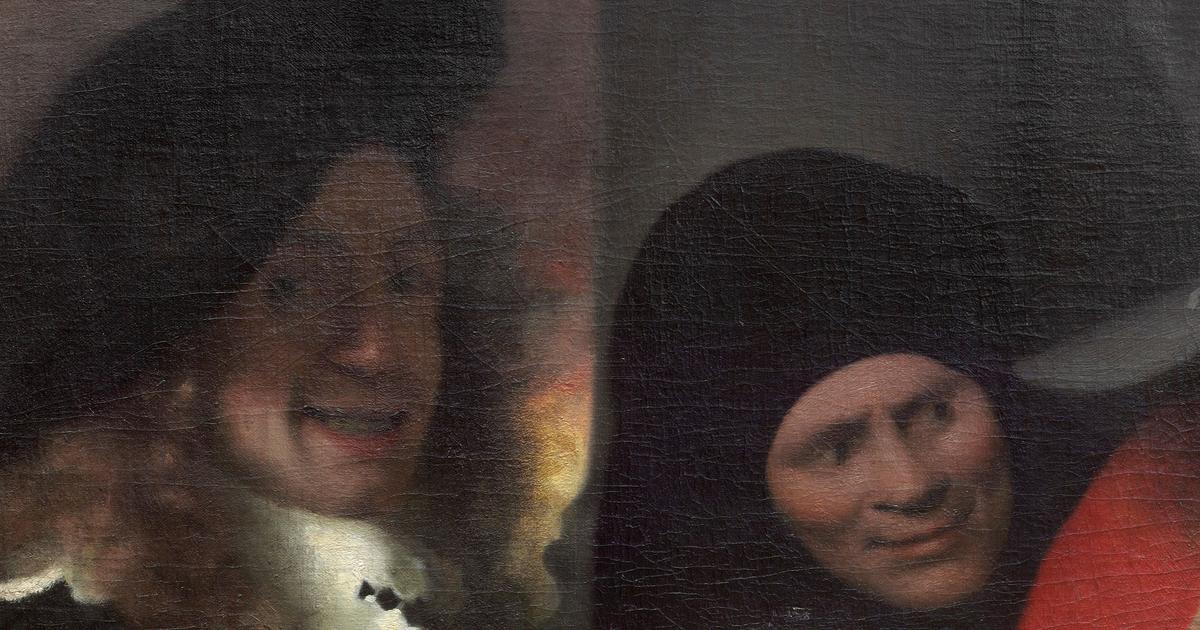This article is taken from the
Figaro Hors-série Vermeer, painting silence.
In this special issue, discover the Dutch Golden Age, the life and work of the Delft prodigy, on the occasion of the largest retrospective ever organized on the painter at the Rijksmuseum in Amsterdam.
The Sphinx of Delft!
Everything is an enigma with Johannes Vermeer.
His work, his life, his face, his thought.
And even his date of birth!
We only know that on October 31, 1632, a boy was baptized in the New Church of Delft, who received the first name of Johannes.
He is the son of Reynier Vos and Digna Baltens.
Reynier Vos is nicknamed Ver Meer or Van der Meer, the man of the sea. He is a merchant, he runs an inn, but he is also an art dealer.
About the childhood and youth of Johannes Vermeer we know nothing more.
Mystery also on the number of his paintings.
The experts only agree on the authenticity of thirty-seven paintings of which only twenty-five are signed and three dated.
There are very few great post-Renaissance artists about whom so little is known.
Read alsoMichel de Jaeghere: “Vermeer, deceptive sun”
We don't know anything about his ideas on art: perhaps he didn't have any.
We cannot say, either, with certainty with which master he was formed, and we do not know if he had pupils.
He did not keep a diary, like Delacroix, and no letter from him, as for Van Gogh, has reached us.
Unlike Rembrandt, we have no authentic portrait either of Vermeer or of his wife and children, even if Malraux was pleased to recognize, without proof, the painter in the guise of the musician in one of his first paintings, The Matchmaker.
Few artists are as rebellious to history as Vermeer.
Not only do we miss the documents that could shed light on his life and his work, but the legend that has taken hold of his character disfigures him, disguises him.
Appreciated without a doubt during his lifetime, without his genius being recognized, he was simply forgotten afterwards.
And for a long time.
For what ?
Because in the 17th and 18th centuries, the academic hierarchy imposed the great masters of Baroque and Classicism and made religious painting and historical scenes prevail.
It took two centuries and the resounding articles of 1866 by the French art critic Étienne Joseph Théophile Thoré, known as William Bürger (1807-1869), in the
Gazette des beaux-arts
, for Vermeer to come out of the shadows and finally be admitted among the great masters of universal painting.
Ten years later, it was the turn of the painter and writer Eugène Fromentin to rediscover, or rather guess, the sphinx of Delft in his book
Les Maîtres d'autrefois
.
And here comes Marcel Proust, always sensitive to exquisite truths, who proclaims the genius of Vermeer in the famous end of the writer Bergotte where he dies of emotion, contemplating the small section of yellow wall of the now so famous
View of Delft
.
If Vermeer rises among the greatest painters, he owes it to the timeless spell of his style.
Few creators have been better able to bring out of paint this song with long resonances through which, in secret and sumptuous images, the extraordinary ordinary is revealed.
Its banality hides its depth, but its depth makes us forget its banality.
This lace smith finds his balance between two poles: emotion and self-control.
The Delft master seems convinced that man changes very little and he reveals the diversity in the identical: the same decor, almost the same characters whose human figures are represented on the same plane as the objects, but a nuance in the lighting, and everything is transformed in this familiar territory.
On the edge of reality, this stylist seeks perfection in stripping and harmony.
Simplicity does not permit a mistake.
And it is then that rises from this painting in porcelain tints, apparently impassive, this pictorial concerto which has nothing sonorous because its tension is entirely interior, mysterious, unforeseen.
But Vermeer remains inaccessible.
Because we enter it on one level.
And that it is transparent.
Vermeer, painting silence
, 164 pages, €13.90, available on newsstands and on
L
e Figaro Store
.
The Girl Reading a Letter in Front of an Open Window
, by Vermeer, c.1657-1658 Dresden, Gemäldegalerie Alte Meister






